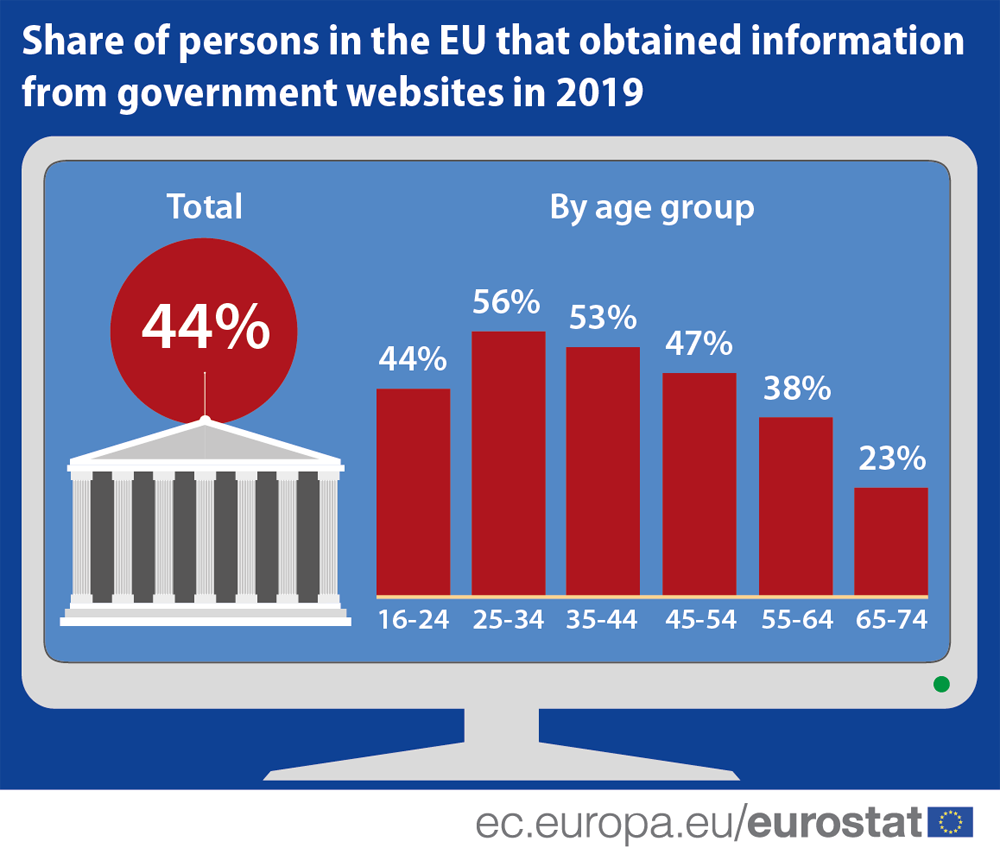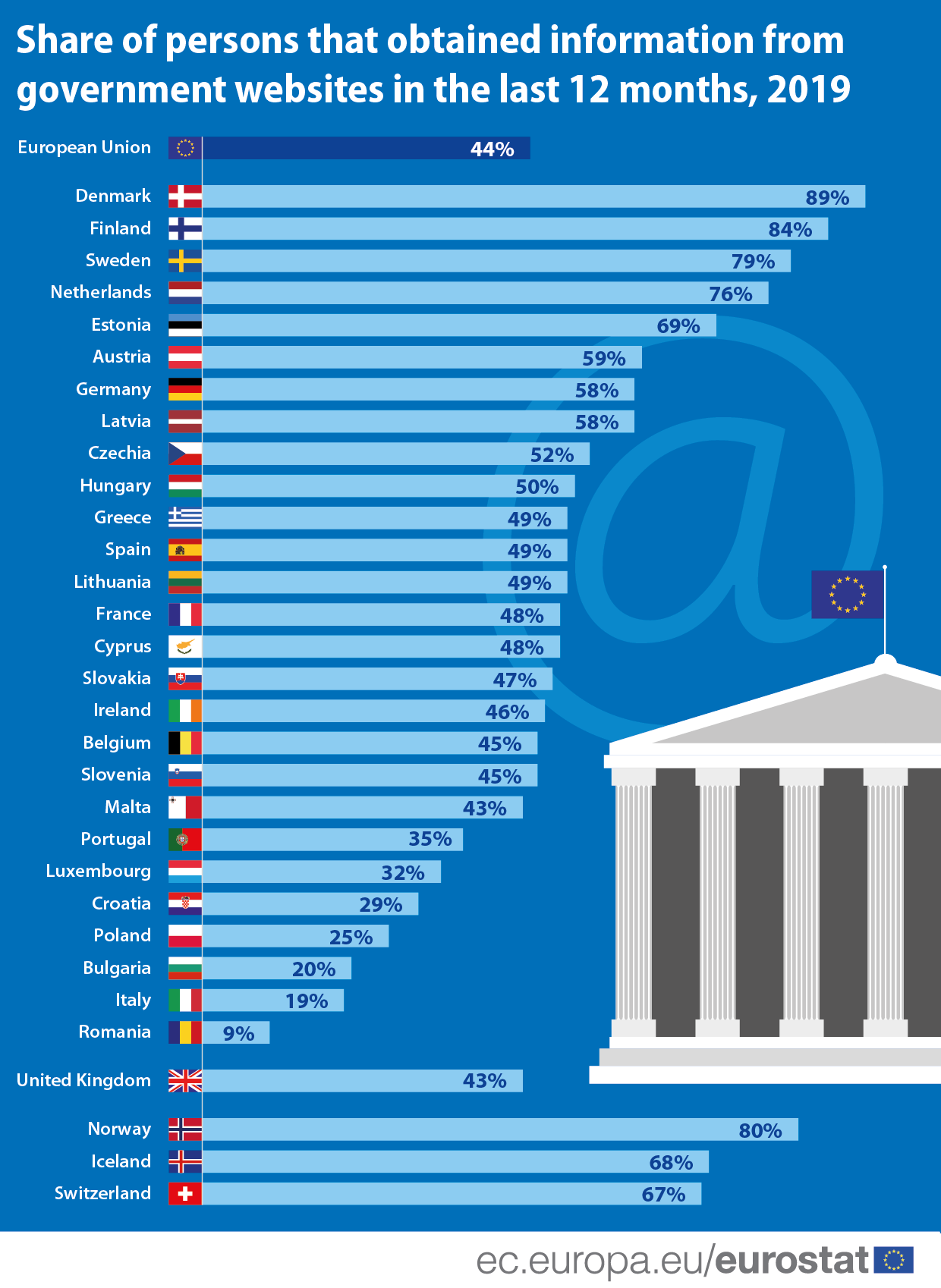e-Government requires rethinking organisations and processes and changing behaviour so that public services are delivered more efficiently to citizens, through the use of suitable online solutions.
In 2019, 44% of citizens in the European Union reported that they had obtained information from the websites of public authorities during the last 12 months. This was substantially higher than the 33% of citizens reporting the same in 2008.
Citizens of all ages use public authorities’ websites to obtain information. With 56%, the share of citizens that reported to have done this in the last 12 months was highest among the 25-34 years old. The 35-44 years old followed closely thereafter with 53%. Although older citizens tended to use public authorities’ websites less to get information, almost a quarter (23%) of citizens aged 65-74 had used government websites for this purpose in the last 12 months.
Data source: isoc_ciegi_ac
-
The European Union (EU) includes 27 EU Member States. The United Kingdom left the European Union on 31 January 2020. Further information is published here.
-
Data in the database are organised according to the survey year; the results above refer to individuals’ experiences during the calendar year prior to the survey.
-
This article marks the Open Data Day, an annual world-wide event aiming to show the benefits of open data and encourage the adoption of open data policies in government, business and civil society.


